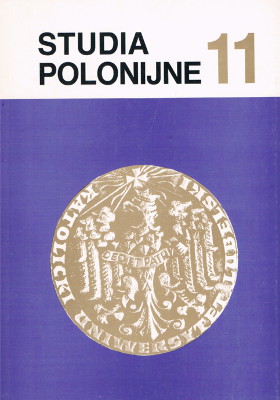Ancient Roots of the Polish National Consciousness
Main Article Content
Abstract
The present article analyses the formative process of the Polish national consciousness in the period from the Middle Ages till the Enlightenment. It takes into consideration Polish and European historical, political, industrial, social and religious background. The article points to the component elements and scope of this consciousness. The author claims that if we regard Slavonic fellowship, the ethnic tie, that is to say, the consciousness of the human community calling itself "we" as against the surrounding neighbours this community then is revealed on two different levels. One of them is the general ethnic notion of Slavs, reflecting the feeling of their own fellowship and an opposition to others. Later on the name Poland, Regnum Poloniae, begen to serve, at the turn of the 10th century, as a sign of a fellowship and its verbal expression. Language played a main role in the consolidation of one's own identity.
The second level was the establishment and development of the country which took form from many different institutions. They prompted their subordinates to be aware of the common lot. They joined together in Poland a unanimous (certainly it was more unanimous than in many other countries) coexistence of nationalities and cultures. Poles, Germans, Lithuans, Russians, Jews, Tatars, Karaites and others lived there together. The activity of the Church had an influence which united and deepened the national consciousness (among others) through a cult of such saints as St Adalbert, St Stanislaus the Bishop, St Hedwig. However, different social strata took part in the national consciousness in a very different degree. The national consciousness of the Polish gentry was different from that of the middle class and peasants. There were major differences with regard to that matter. The programme of widening scope of national consciousness to include peasants was formulated in the second half of the 19th century.

